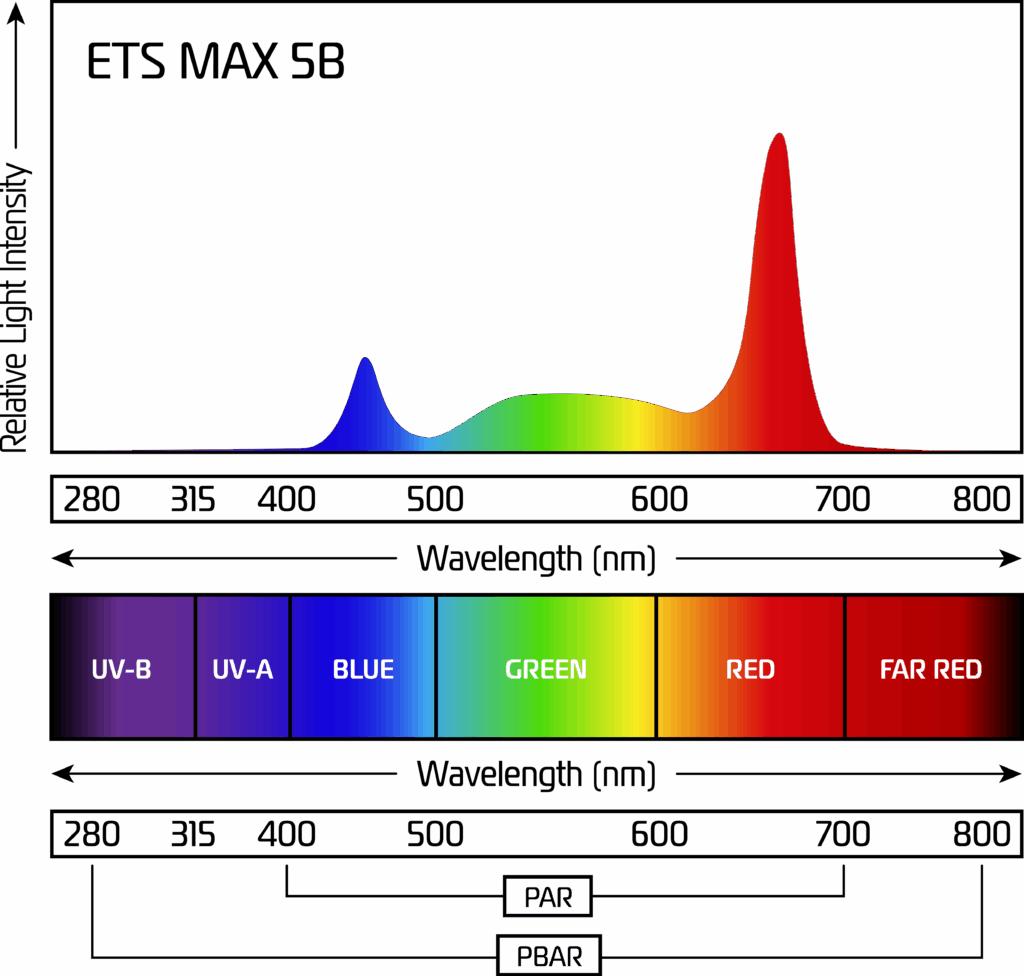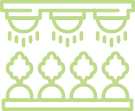
July 25, 2025
We get asked a lot about PAR since it’s one of those terms that you need to know in the growing and horticultural world. Here’s a quick primer on what PAR means as well as a great video from our founder about why PAR is important.
What is PAR?
PAR is an acronym that stands for photosynthetically active radiation, which means “the range of light plants can actually use for photosynthesis” in layman’s terms.
Technically, PAR covers the spectrum from 400 to 700 nanometers. That range is what we call visible light (blue, green, red) and it’s the baseline we use to measure things like PPE (photosynthetic photon efficacy), which is the efficiency with which a grow light can turn power (measured in Watts) into light output that can be used to help grow your plants. When we’re talking about how efficient a light is, we’re usually asking: how many photons are landing in that PAR range?
At JumpLights, we don’t always stop at 700 nm, though. There’s a lot of solid research out there showing that far-red light (beyond 700nm) can also be a game-changer, especially when it comes to things like flowering and plant morphology. Some of our lights include this far-red light as well.
PAR is a useful tool for quantifying plant-usable light, but it’s not the only type of light that can impact plants. As research evolves, so does our approach to light spectrums, and our lighting designs reflect that.
For more information on PAR, check out the video below from our CTO and Co-Founder Matteo del Ninno.




